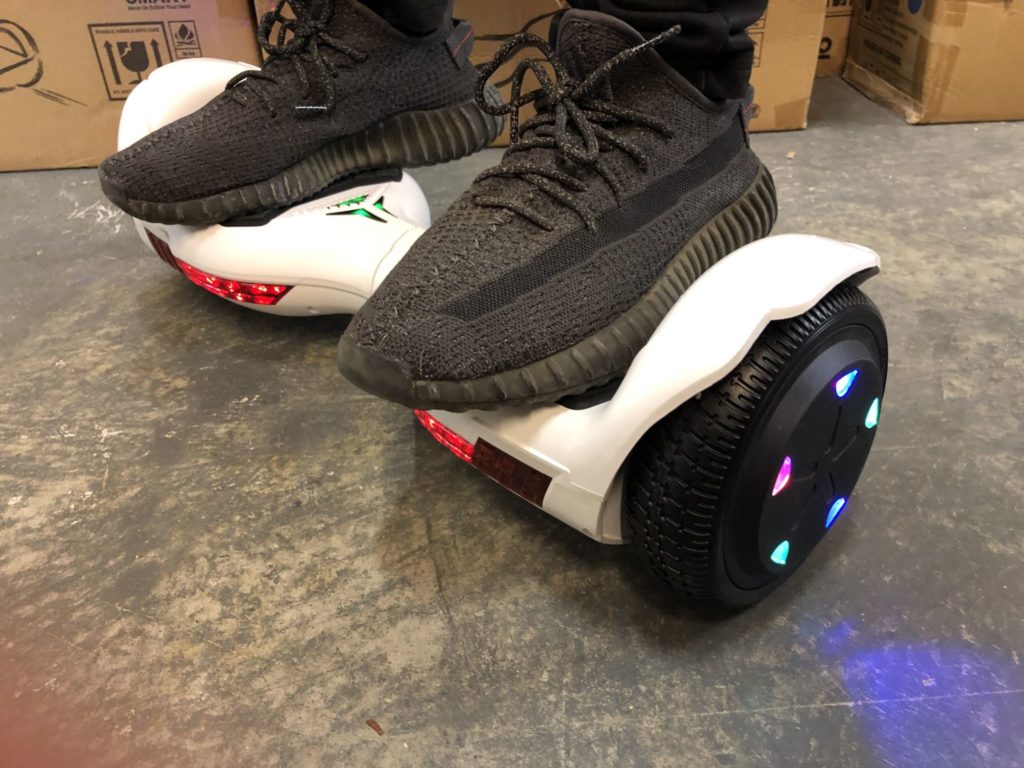Hoverboard, Informational
Off-Road vs. On-Road Hoverboards – A Comprehensive Comparison

Hoverboards have come a long way since their release, evolving into versatile personal transportation devices that cater to various lifestyles. One significant factor that distinguishes hoverboards is their suitability for specific terrains – off-road or on-road. In this article, we will dive into the key differences between off-road and on-road hoverboards, helping you make an informed decision based on your preferences and intended use.
Wheel Design and Size
-
- On-Road: On-road hoverboards typically feature smaller wheels with a diameter ranging from 6 to 8 inches. The smaller wheels contribute to a smoother ride on flat and paved surfaces, optimizing stability and maneuverability.
- Off-Road: Off-road hoverboards are equipped with larger, sturdier wheels, usually measuring 8 inches or more. These wheels provide better traction and stability on uneven and challenging terrains, such as gravel paths, grassy fields, and dirt trails.
Tire Type
-
- On-Road: On-road hoverboards often have solid rubber tires or air-filled tires. Solid rubber tires are low-maintenance and puncture-resistant, while air-filled tires offer a more cushioned ride.
- Off-Road: Off-road hoverboards usually come with pneumatic (air-filled) tires. These tires act as shock absorbers, minimizing the impact of bumps and uneven surfaces. They are designed to handle rough conditions and provide a smoother off-road experience.
Build and Construction
-
- On-Road: On-road hoverboards prioritize a sleek and lightweight design, featuring a lower ground clearance for better aerodynamics. The frames are often made from lightweight materials like aluminum or ABS plastic.
- Off-Road: Off-road hoverboards boast a robust construction with a higher ground clearance. The frame is designed to withstand the rigors of off-road adventures, incorporating durable materials such as reinforced aluminum or heavy-duty plastics.
Motor Power and Performance
-
- On-Road: On-road hoverboards typically have motors with lower wattage, as they require less power for smooth surfaces. Motors in the range of 250 to 350 watts are common for on-road models.
- Off-Road: Off-road hoverboards are equipped with more powerful motors, often exceeding 350 watts. This increased power is necessary for conquering inclines, rough terrains, and providing a stable performance across various off-road conditions.
Battery Life
-
- On-Road: On-road hoverboards tend to have longer battery life since they operate on smoother surfaces. Battery capacities usually range from 15 to 20 kilometers on a single charge.
- Off-Road: Off-road hoverboards may have slightly shorter battery life due to the increased power demands of navigating challenging terrains. Expect ranges between 10 to 15 kilometers on a full charge.
Can you ride a hoverboard in the grass
- On-Road: On-road hoverboards are tailored for pavements and indoor use exclusively.
- Off-Road: Off-road hoverboards offer versatile exploration, allowing riders to traverse not just grassy areas but also diverse off-road conditions like gravel and beach landscapes.
Choosing between an off-road and on-road hoverboard ultimately depends on your intended use and personal preferences. If you enjoy cruising on smooth pavements and urban landscapes, an on-road hoverboard with smaller wheels and a sleek design may be ideal. However, if you crave off-road adventures and want to explore rough terrains, opt for an off-road model with larger wheels, robust construction, and a powerful motor. Understanding these key differences will help you make an informed decision, ensuring your hoverboard aligns perfectly with your lifestyle and terrain preferences.
Click here to explore the best off-road hoverboards
Click here to explore the best on road hoverboards
